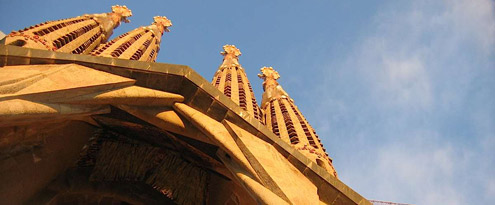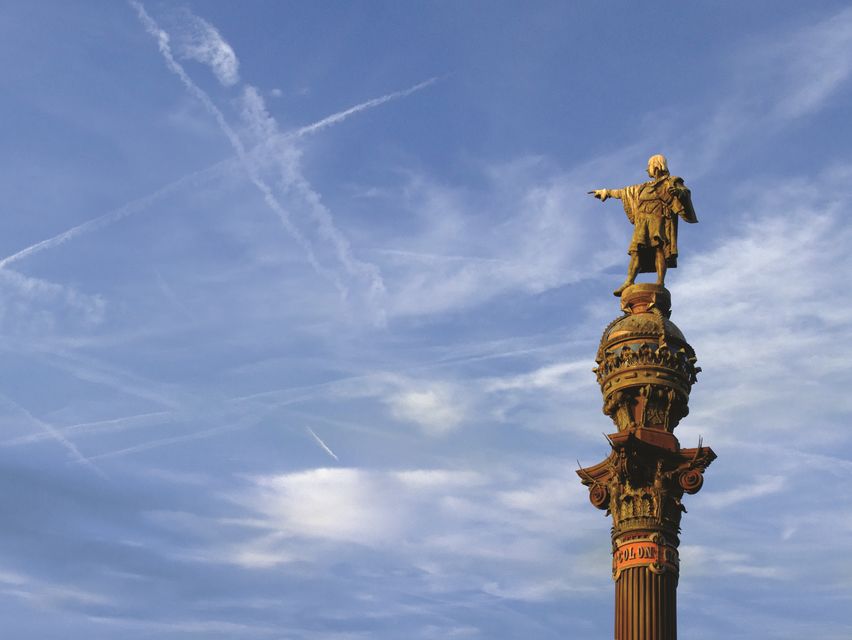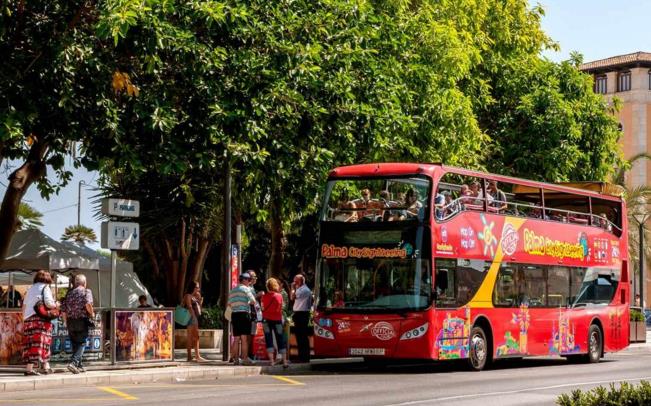
Barcelona: A Comprehensive Travel Guide
Barcelona, the vibrant capital of Catalonia, is a city that dances to its own rhythm. Nestled between the Mediterranean Sea and the Collserola hills, it is a place where Gothic history, modernist art, and contemporary cool collide. From the surreal architecture of Antoni Gaudí to the bustling food markets and sun-kissed beaches, Barcelona offers a multi-sensory experience that captivates millions of visitors each year. This guide will help you navigate its charms, from must-see attractions to local secrets.
Must-Visit Attractions & Neighborhoods
Barcelona's attractions are as diverse as they are magnificent. They span centuries, from ancient Roman ruins to groundbreaking 20th-century art, all woven into the fabric of a living, breathing city.
The Architectural Marvels of Antoni Gaudí
No visit to Barcelona is complete without immersing yourself in the fantastical world of its most famous son, Antoni Gaudí. His organic, modernist style defines the city's aesthetic.
La Sagrada Família: This is Gaudí's unfinished masterpiece and the city's undisputed icon. More than a church, it is a symphony in stone. The sheer scale and detail are overwhelming. Be sure to observe the contrasting façades: the intricate, storytelling Nativity Façade and the stark, dramatic Passion Façade. The interior is a forest of tree-like columns soaring towards a canopy of hyperboloid vaults, flooding the space with ethereal light through stained glass windows.
Tip: Book tickets online weeks in advance for a specific time slot to avoid immense queues. An audio guide or a live tour is highly recommended to fully appreciate the symbolism.
Park Güell: Originally conceived as a housing estate, this public park is a whimsical wonderland. Stroll through the "Greek Theatre" with its famous serpentine bench covered in a mosaic of broken ceramic tiles (
trencadís). Take a photo with the iconic mosaic lizard dragon at the entrance. The park offers some of the best panoramic views of the city.
Insight: The Monumental Zone requires a paid ticket. The free area of the park is much larger and equally beautiful for a relaxed walk.
Casa Batlló & Casa Milà (La Pedrera): Located on the prestigious Passeig de Gràcia, these are two of Gaudí's most famous civil works. Casa Batlló, with its skeletal organic form and dragon-back roof, is a riot of color and shape. Casa Milà, nicknamed "La Pedrera" (The Stone Quarry), is notable for its wavy stone façade and surreal, twisting chimney pots on its rooftop terrace.
Tip: Visit Casa Batlló in the evening for its magical "Magic Nights" with live music and a drink on the rooftop.
The Gothic Quarter (Barri Gòtic)
This is the historic heart of Barcelona, a labyrinth of narrow, winding medieval streets where you can feel the weight of 2,000 years of history. It's easy to get lost here, and that's part of the fun.
Barcelona Cathedral: A stunning example of Catalan Gothic architecture. Don't just look at the façade; step inside to see the serene cloister with its 13 white geese (representing the martyrdom of Saint Eulalia) and take an elevator to the roof for a close-up view of the spires.
Plaça del Rei: A secluded square that feels frozen in time, surrounded by majestic medieval buildings. It's said that Christopher Columbus was received here by the Catholic Monarchs after his first voyage to the Americas.
The Roman Walls: Scattered throughout the quarter are remnants of the ancient Roman city of Barcino. Look for them near the Cathedral and in Plaça Ramon Berenguer el Gran.
Insight: Explore the Barri Gòtic early in the morning to experience its mysterious atmosphere before the crowds arrive, or late at night when the old streetlights cast dramatic shadows.
El Born & La Ribera
Adjacent to the Gothic Quarter, El Born is a trendy, bohemian neighborhood packed with chic boutiques, artisan workshops, and lively tapas bars.
Santa Maria del Mar: A breathtakingly beautiful church and a masterpiece of Catalan Gothic architecture. Its clean, vertical lines and sense of spaciousness create an atmosphere of pure serenity, often considered more harmonious than the cathedral.
Picasso Museum: Housed in five adjoining medieval palaces, this museum focuses on Picasso's formative years. It's fascinating to see his classical training and watch his style evolve towards Cubism, all while understanding his deep connection to Barcelona.
La Barceloneta & The Waterfront
Once a traditional fishing neighborhood, Barceloneta is now known for its sandy beach, bustling seafood restaurants, and lively atmosphere.
Barceloneta Beach: The city's most famous beach is perfect for a stroll, a swim, or simply people-watching. It's lined with
chiringuitos (beach bars) that are great for a casual drink.
Port Vell: Stroll along the marina, past luxury yachts, to the Maremàgnum shopping center. The wooden
Rambla de Mar bridge offers great views back towards the city.
Travel Tip: Be extra vigilant with your belongings on the beach and in crowded areas, as pickpocketing is common.
Montjuïc
This broad hill overlooking the city's port offers culture, history, and spectacular views.
Magic Fountain of Montjuïc: A spectacular display of light, music, and water acrobatics. Check the official schedule for show times, as they vary by season.
Montjuïc Castle: A former military fortress with a dark history, now offering commanding 360-degree views of Barcelona and the sea.
Poble Espanyol: An open-air architectural museum showcasing replicas of characteristic buildings from all over Spain. It's a great place to shop for crafts and see diverse Spanish architectural styles in one place.
National Art Museum of Catalonia (MNAC): Housed in the magnificent Palau Nacional, this museum holds one of the world's finest collections of Romanesque art.
A Culinary Journey: What and Where to Eat
Catalan cuisine is a highlight of any trip, characterized by its freshness, Mediterranean roots, and bold flavors.
Must-Try Dishes & Drinks
Tapas & Pintxos: Small plates meant for sharing. Classics include
patatas bravas (fried potatoes with spicy sauce and aioli),
pimientos de padrón (fried green peppers, some are spicy!),
jamón ibérico (cured ham), and
gambas al ajillo (garlic shrimp). In a
pintxo bar, you help yourself from the counter and are charged by the number of toothpicks on your plate.
Paella: The iconic Spanish rice dish. In Barcelona, you'll more commonly find
Paella de Marisc (seafood paella).
Insight: Authentic paella is a lunchtime dish, cooked to order and served for a minimum of two people. Be wary of places that offer it as a single-serving dinner special.
Seafood: Don't miss
Fideuà, a paella-like dish made with short noodles instead of rice. Fresh grilled fish at a beachfront restaurant in Barceloneta is also a must.
Escudella i Carn d'Olla:A traditional Catalan stew, often eaten in winter.
Cava: Catalonia's famous sparkling wine, perfect for celebrations or a casual aperitif.
Sangria & Tinto de Verano:Sangria is a tourist favorite, but locals often prefer the simpler
Tinto de Verano (red wine mixed with lemon-lime soda).
The Best Food Markets
La Boqueria:The city's most famous market on La Rambla is a vibrant, chaotic spectacle of colors and smells. While it's very touristy, it's still worth a visit. Go early to avoid the worst crowds. Try a fresh fruit juice or grab a stool at one of the small tapas bars inside, like El Quim or Pinotxo Bar.
Mercat de Santa Caterina:A fantastic alternative to La Boqueria, located near the Cathedral. Its undulating, colorful roof is a work of art. It's less crowded and has an excellent selection of high-quality produce and tapas bars where locals shop.
Getting Around Barcelona
Barcelona is a very walkable city, but its public transportation system is excellent for covering longer distances.
Metro & Buses:The TMB metro system is clean, efficient, and covers almost every corner of the city. Buses are useful for routes not served by the metro. The
Hola BCN! travel card offers unlimited travel for 2 to 5 days on all public transport and is highly cost-effective for tourists.
Walking:The best way to explore neighborhoods like the Gothic Quarter, El Born, and Gràcia is on foot. You'll discover hidden plazas, charming shops, and street art you'd miss otherwise.
Taxis & Ride-Sharing:Taxis are plentiful and reasonably priced. They are metered and can be hailed on the street or found at designated ranks. Ride-sharing apps like Uber and Cabify also operate in the city.
Biking:Barcelona has an extensive network of bike lanes. The city's bike-sharing scheme,
Bicing, is primarily for residents, but many private companies offer bike rentals for tourists.
A Glimpse into Catalan Culture & Local Life
The Catalan Identity
Catalonia has its own distinct language (Catalan), culture, and traditions. While everyone speaks Spanish (Castellano), you will see and hear Catalan everywhere—on street signs, menus, and in conversation. Locals appreciate any effort to use basic Catalan phrases like "
Bon dia" (Good day) or "
Merci" (Thank you). The Catalan flag, the
Senyera, is displayed proudly on balconies across the city.
Siesta & Late-Night Culture
The Spanish schedule is later than many are used to. Lunch is typically from 2 PM to 4 PM, and dinner rarely starts before 9 PM. Many smaller shops still close for a siesta in the afternoon (around 2 PM to 5 PM). Nightlife starts late; heading to a bar at 11 PM or a club at 1 AM is perfectly normal.
Festivals & Traditions
La Mercè:The city's largest festival in September, featuring street parades with "
gegants" (giants), "
castells" (human towers), and concerts.
Sant Jordi (April 23rd):A beautiful Catalan version of Valentine's Day, where men give women a rose and women give men a book. The streets, especially La Rambla, are filled with book and flower stalls.
Castells:The breathtaking tradition of building human towers. You can often see these practiced or performed in main squares during festivals.
Practical Travel Tips & Local Insights
Shopping Hours:Major stores are generally open from 10 AM to 8/9 PM. Smaller, independent shops may close for siesta (2 PM - 5 PM) and are often closed on Sundays and Monday mornings.
Tipping:Tipping is not as customary as in North America. In restaurants, it's common to leave small change or round up the bill. For exceptional service, 5-10% is generous but not expected.
Siesta Reality:The traditional siesta is less common in a bustling metropolis like Barcelona. While small family-run shops may close, most major attractions, department stores, and restaurants in tourist areas remain open all day.
Avoiding Pickpockets:This cannot be stressed enough. Barcelona is notorious for pickpockets, especially on La Rambla, the metro, and in crowded tourist spots. Use a cross-body bag kept in front of you, don't keep your phone or wallet in your back pocket, and be aware of your surroundings. Avoid street scams like the "petition" distraction or being "offered" rosemary.
The Best Views:
Bunkers del Carmel:A bit of a hike but offers a free, stunning 360-degree panoramic view of the entire city. It's popular for sunset.
Sagrada Família Towers:The view from within the city is unique and breathtaking.
Montjuïc Castle:The classic postcard view over the port and city skyline.
Avoiding Crowds:The most popular attractions are crowded year-round. Book tickets online with timed entry for places like Sagrada Família and Park Güell. Visit major sites first thing in the morning or later in the afternoon.
A Day Trip Idea:The mountain monastery of Montserrat, with its dramatic rock formations and sacred Black Madonna statue, is an easy and highly rewarding day trip from Barcelona by train.
A trip to Barcelona is an immersion into a city of boundless creativity and vibrant life. By blending its iconic sights with local neighborhoods and culinary delights, you'll leave not just with photographs, but with a true feeling for the soul of Catalonia.
`



